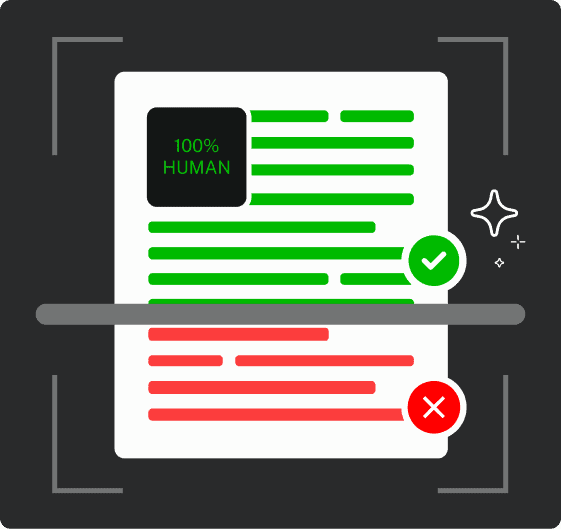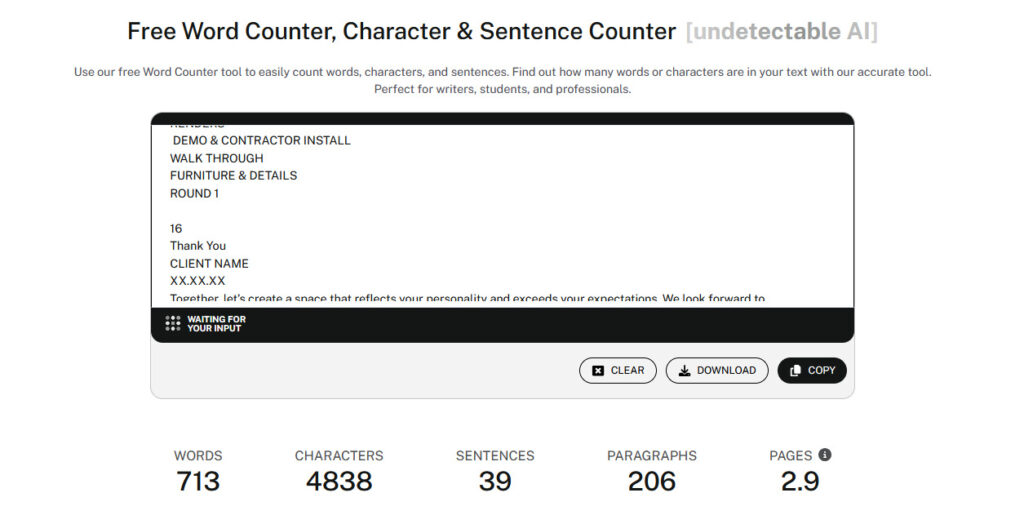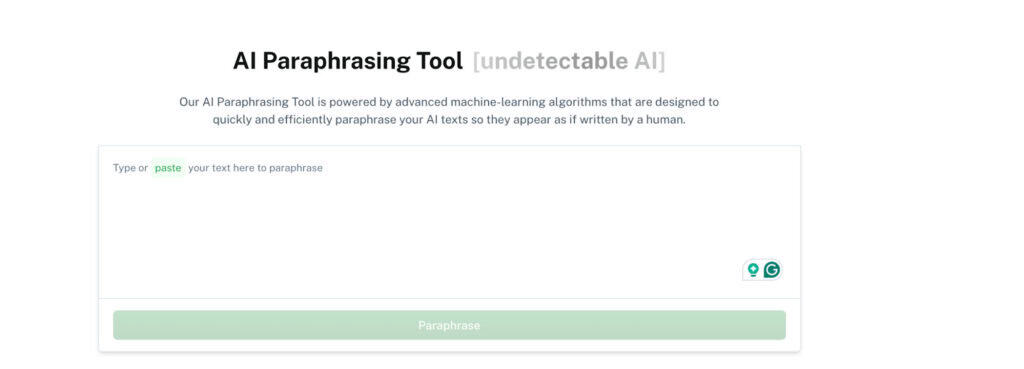Statement of purpose.
It sounds a little intimidating and potentially a little dry, right?
It’s essentially a letter of intent that emphasizes your credibility by talking about your career path, interests, and professional contributions.
It paints a picture of your overall personality so that the people on the admission panel can assess your vision.
This statement can be used whenever you’re applying for college admission, scholarships, graduate school, or job applications.
It doesn’t always need to be long, intricate, or very detailed—you just want to preview what you’ve accomplished.
A statement of purpose is your key to getting an interview.
Without a proper letter, you might let an opportunity slip away.
So, read on as we discuss everything you need to know when writing one.
What Is a Statement of Purpose?
A statement of purpose (SOP) is your academic mission statement—a focused, professional narrative that showcases your qualifications, goals, and motivation.
It’s not exactly just another essay, but instead, a way to convince admissions committees that you’re more than just grades and test scores.
Definition and Purpose of a Statement of Purpose
An SOP highlights why you’re a perfect fit for the program and how that program aligns with your future plans. It’s about clarity, ambition, and direction.


Never Worry About AI Detecting Your Texts Again. Undetectable AI Can Help You:
- Make your AI assisted writing appear human-like.
- Bypass all major AI detection tools with just one click.
- Use AI safely and confidently in school and work.
While a personal statement dives into life experiences and emotions, an SOP is all business. Zero fluff, maximum purpose.
Admissions committees aren’t looking for dramatic plot twists.
They want to see your academic journey, research interests, and professional goals.
This is where you show them you’re not just applying but applying with intention.
Differences Between a Statement of Purpose and a Personal Statement
While a statement of purpose (SOP) and a personal statement might seem interchangeable, they serve distinct purposes.
Mixing them up can weaken your application.
An SOP is all about your academic and professional goals.
It’s structured and formal and focuses on your qualifications, research interests, and how a specific program aligns with your future plans.
Think of it as your academic pitch: “Here’s what I’ve done, what I want to achieve, and why this program is the perfect fit.”
In contrast, writing a personal statement is about your personal journey.
It’s more narrative-driven, often reflecting on life experiences, challenges, and defining moments that shaped who you are today.
It’s less about what you’ve accomplished and more about why you pursued those paths.
Key differences:
- SOP: Focuses on goals, academic achievements, and professional aspirations.
- Personal Statement: Explores personal experiences, motivations, and values.
Who Needs a Statement of Purpose?
Not everyone wakes up thinking, “I need an SOP today,” but if you’re applying for anything that values ambition and direction, chances are, you’ll need one.
Statement of Purpose for Graduate School
Graduate programs love SOPs. They’re not just checking your writing skills. They’re assessing:
- Research interests and how they align with faculty expertise.
- Academic background and relevant experiences.
- Understanding of the field—you know what you’re getting into.
- Career goals—where you see yourself after the degree.
- Potential contributions—what unique perspective you’ll bring.
This isn’t about reciting your resume. It’s about showing you’re academically curious, driven, and prepared for the deep dive that grad school demands.
Statement of Purpose for Scholarships

Scholarship committees want to invest in people who’ll do something meaningful with a scholarship.
A scholarship SOP should clearly show the following:
- How the funding will impact your academic journey.
- Alignment with the scholarship’s mission.
- Your potential in your field—future leaders, innovators, change-makers, they’re looking at you.
- Achievements that prove you’re worth the investment.
Pro tip: Tie your goals directly to the scholarship’s purpose.
Don’t just tell them why you need it—show them why they should care.
Statement of Purpose for Jobs & Career Advancements

While less common, some job applications—especially in academia, research, and specialized industries—require an SOP.
This version shifts the spotlight from academic goals to professional growth and career trajectory.
Common in roles like:
- Research positions—where your academic background meets real-world applications.
- Academic administration—because leadership in education demands clarity of purpose.
- EdTech companies, think tanks, and policy organizations—where innovation meets strategy.
Here, your SOP should connect the dots between your skills, experiences, and the organization’s mission.
Your goal is not just to say, “I want this job,” it’s “Here’s how I fit into your big picture.”
How to Write a Statement of Purpose
Writing a statement of purpose (SOP) isn’t about stringing together fancy words or stuffing your essay with academic jargon.
You need to have a compelling narrative that connects your past, present, and future.
Sound intense?
Maybe. But with the right approach, it’s less of an “intimidating essay” and more of a “strategic showcase of your brilliance.”
Here’s how to make it happen, step by step.
Step 1: Understand the Purpose and Expectations
Before diving into writing, take a moment to ask yourself: What’s the point of this SOP? It’s not just another application formality.
Admissions committees aren’t looking for generic essays. Instead, they want insight into who you are, why you’re applying, and what makes you the right fit.
You’re not just listing achievements here, but rather answering unspoken questions like What drives you? Why this program? Why now?
The clearer you are on the purpose, the easier it becomes to write with intention.
Step 2: Research the Institution or Program Requirements
Instead of copy-pasting the same essay everywhere, dig deep.
What courses excite you? Which professors’ work aligns with your interests?
Does the department offer unique resources or research opportunities that match your goals?
Forget about sprinkling buzzwords to impress.
You’ll want to demonstrate genuine interest. When you show that you’ve done your homework, it tells the committee: “I’m not just applying; I’m invested.”
Step 3: Brainstorm Key Points About Your Background & Goals
Now comes the part where you look inward.
No, not in a “find your inner peace” way, but in a “what makes me stand out?” way.
Reflect on the experiences that have shaped your academic journey.
What’s relevant? Think beyond grades.
Consider research projects, internships, challenges you’ve overcome, or even that one course that completely shifted your perspective.
The goal isn’t to create a laundry list of items but to identify threads that connect your experiences to your future aspirations.
Step 4: Structure Your Statement of Purpose Properly
Well-structured content should read like a smooth conversation and not a checklist.
While there’s no rigid template, the flow generally looks something like this:
- Introduction: A hook that captures attention without sounding like a movie trailer.
- Academic Background: Highlights your qualifications and relevant experiences.
- Research & Professional Experience: Where you flex your intellectual muscles.
- Program Fit: Explain why this specific program aligns with your goals.
- Future Goals: Where are you headed, and how does this program get you there?
- Conclusion: Wrap it up with confidence—no need for dramatic mic drops.
Structure is the invisible backbone.
The reader shouldn’t notice it’s there, but without it, everything falls apart.
Step 5: Write a Compelling Introduction
Forget about opening with, “I’ve always been passionate about…” It’s been done. A lot.
Instead, start with something that’s authentic and specific, like an idea, a question, or a defining moment in your academic journey.
Your introduction sets the tone.
It should spark curiosity, not confusion. Keep it crisp, relevant, and intriguing enough to make the reader think, “I want to know more.” That’s your win.
Step 6: Highlight Your Academic and Professional Achievements
When discussing your achievements, focus on quality over quantity.
It’s not about listing every award or job you’ve had, try connecting your experiences to your goals.
Instead of saying, “I completed an internship at XYZ Company,” elaborate on:
- What you learned during the experience
- How it influenced your academic or professional path
- Skills you developed that will be valuable in the program
- Challenges you faced and how you overcame them
Step 7: Explain Your Goals and How the Program Aligns with Them
Generic statements like “I want to advance my career” are about as exciting as dry toast. Be specific.
What are your short- and long-term goals? How does this program help you achieve them?
Show how their resources, faculty, or curriculum aren’t just impressive but how they’re exactly what you need to reach your goals.
Step 8: Show Why You’re a Perfect Fit for the Program
This is where your research pays off.
You’ve already highlighted what the program offers, so now flip the script. What do you bring to the table?
Whether it’s your academic background, unique perspective, or potential contributions to research projects, make it clear that you’re not just a great fit but that you’re the missing piece they didn’t know they needed.
Step 9: Conclude with a Strong and Memorable Closing Statement
End with confidence, not clichés. Skip the “Thank you for considering my application”.
Reinforce your main points without repeating them verbatim. Highlight your enthusiasm for the program and your commitment to the field.
A strong conclusion might:
- Reaffirm your academic and professional goals
- Express excitement about the opportunity to contribute
- Leave the reader with a memorable final thought about your potential
Statement of Purpose Format & Best Practices
A well-formatted SOP is easy to read, professionally structured, and delivers maximum impact without unnecessary fluff.
Ideal Length and Word Count for a Statement of Purpose
Most institutions prefer SOPs that are between 500 and 1,000 words and typically fit into one to two pages, depending on formatting guidelines.
Always check specific program requirements, as some may set strict word limits while others give more flexibility.
Most programs specify word limits but typically stay in this range:
- Master’s programs: 500-1,000 words
- Ph.D. programs: 1,000-1,500 words
- Scholarship applications: 500-800 words
Keeping track of your word count without sacrificing quality can be tricky. That’s where the Undetectable AI Word Counter comes in handy.

The tool is very straightforward. Just copy and paste what you wrote, and it will give you an accurate word count.
It will help you identify areas that might be overly wordy, making it easier to streamline your content without losing depth.
How to Keep It Concise, Clear, and Impactful
The key to an impactful SOP is clarity and precision.
Focus on strong, active language, avoid filler words, and make sure every sentence serves a purpose. Use transitions to maintain flow and ensure your narrative feels cohesive.
Remember, it’s not about saying more, but what matters.
Dos and Don’ts When Writing a Statement of Purpose
To get it right, here’s what to keep in mind:
DO:
- Be specific. General statements like “I’m passionate about learning” won’t cut it.
- Tailor your SOP to the program. Show you’ve done your research.
- Keep it professional but authentic. Your personality should shine through, just not at the expense of clarity.
- Proofread. Typos are tiny red flags waving, “I didn’t review this properly.”
DON’T:
- Overshare irrelevant personal details. This isn’t an autobiography.
- Use clichés like “since I was a child” unless you’ve got a fresh angle.
- Exaggerate. Admissions committees can spot it from a mile away.
- Copy-paste the same SOP for every application. They’ll know.
Statement of Purpose Templates & Examples
Having a structure helps. A solid SOP typically includes:
- Introduction: Grab attention with a compelling opening.
- Academic Background: Highlight key achievements.
- Professional Experience: Connect your work to your goals.
- Why This Program: Show how it aligns with your aspirations.
- Conclusion: End with confidence and purpose.
How AI Can Help You Write a Perfect Statement of Purpose
SOPs require clarity, flow, and good presentation. To help you with that, Undetectable AI offers more than dozens of AI tools to add to your arsenal.
1. Enhance Sentence Flow with the Paraphrasing tool: Struggling with awkward phrasing or repetitive sentences?
The Paraphraser helps refine your wording without losing your original meaning.

It restructures clunky sentences, eliminates redundancy, and sharpens your ideas.
2. Maintain a Natural Tone with the AI Humanizer: A common mistake in SOPs is sounding too robotic or overly formal.
The AI Humanizer helps strike the perfect balance by keeping your tone professional yet authentic.
Using NLPs, it adjusts language to sound natural, conversational (where appropriate), and engaging while maintaining academic credibility.
Try it now:
3. Brainstorm Like a Pro with Ask AI: It can suggest strong opening lines, help identify key experiences to include, and even offer ideas on how to align your goals with the program’s strengths.
It’s like having a writing coach on demand, offering fresh perspectives whenever you hit a creative block.
Final Tips for Submitting a Strong Statement of Purpose
As always, the last steps before you submit any document are checking the format and proofreading. Here are some simple tips.
How to Proofread and Edit Your SOP Effectively
- Content edit (Does everything make sense?)
- Structural edit (Does it flow well?)
- Line edit (Is the writing clean and error-free?)
Submitting Your SOP in the Correct Format
- Save in the requested format (usually PDF)
- Use standard fonts (Times New Roman, Arial)
- Include proper spacing (usually double-spaced)
- Add headers if required
- Name the file appropriately
Nail Your Statement of Purpose
Writing a statement of purpose is about telling your story in a way that resonates with your readers.
Take your time, be authentic, and show why you’re not just qualified but truly passionate about your chosen path.
Your statement of purpose is often the only chance you get to speak directly to the decision-makers, so make every word count, and don’t be afraid to let your genuine enthusiasm for your field shine through.
Need help getting started?
Try using some of the Undetectable AI tools mentioned above to overcome writer’s block, or reach out to mentors and peers for feedback.
The perfect statement of purpose is within your reach; you just need to take that first step and start writing!
